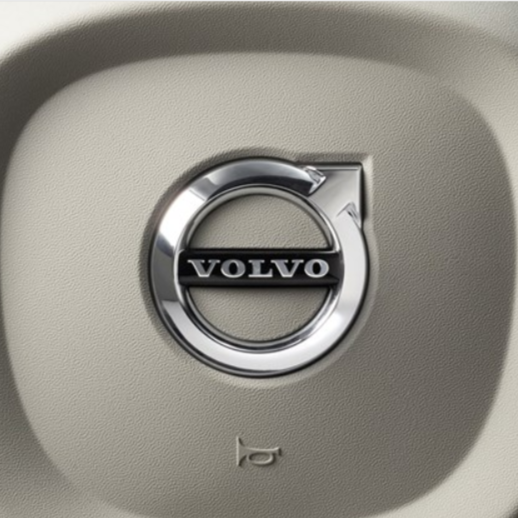Volvo: One of the most well-known and respected automobile brands in the world, with sales in 100 countries
The first Volvo car was launched from the Gothenburg production line in Sweden in 1927. Since then, Volvo Car Group remains the world leader in safety technology and innovation.

Volvo Car Group (Volvo Cars) is owned by Zhejiang Geely Holding (Geely Holding) in China. Volvo Cars was part of the Swedish Volvo Group until 1999, when the company was acquired by Ford Motor Company. In 2010, Volvo Cars was acquired by Geely Holding.
The name “Volvo” is owned by Volvo Commercial Holding AB, jointly owned by Volvo Cars and the Volvo Group.
Volvo cars are marketed and sold by regional and national sales companies through 2,300 local dealers in nearly 100 countries. Most authorized dealers are independent companies. As of December 2018, Volvo Cars has approximately 43,000 full-time employees worldwide.
In 2018, Volvo Cars broke its own sales record for the fifth consecutive year with 642,263 cars sold. China, the largest market, accounted for approximately 20% of the total sales volume in 2018, followed by the USA (15%), Sweden (10%), the UK. (8%) and Germany (7%) follow.
Volvo Cars head office, product development, marketing and management functions are mainly located in Gothenburg, Sweden. It has offices in Shanghai and Chengdu (both in China) since 2011. Volvo Cars China head office in Shanghai includes a technology center as well as sales and marketing, manufacturing, purchasing, product development and other supporting activities.
Alongside the main European car production facilities in Gothenburg (Sweden) and Ghent (Belgium), Volvo Cars has been producing engines in Skövde (Sweden) since the 1930s. The production of body parts has been located in Olofström (Sweden) since 1969.
The company operates research and development centers in Shanghai, Stockholm, Lund (Sweden) and Sunnyvale (USA), as well as assembly plants in Kuala Lumpur (Malaysia) and Bengaluru (India). It also has design centers in Gothenburg, Camarillo (USA) and Shanghai.
Volvo Cars started production in 2013 at its first Chinese manufacturing facility in Chengdu. Volvo Cars operates a production facility in Luqiao and an engine factory in Zhangjiakou, China, while a second facility in Daqing started production in 2014. Volvo Cars also has a manufacturing facility in the USA in Berkeley, South Carolina, which opened in 2018.
Evolution of models
Although Volvo entered the automobile business in 1927, it launched its first luxury car, the PV 654, in 1933. It featured an improved, plush interior, two spare tires, and two extra lights behind it. The 80-horsepower car was powered by a 3.67-liter, 6-cylinder engine.
In 1935, Volvo released the PV36 Carioca. In addition to its aerodynamic structure, the Carioca had independent front suspension and 6 seater seats. Volvo produced 501 Cariocas. The Carioca's engine was the same as that found in the PV654 and could go up to 120 kilometers per hour.
After the Second World War, Volvo returned in 1946 with the PV60 model. Although the style of the car lagged behind the trends of the period, it became quite popular. The PV60 offered its customers a solid and comfortable experience. It had what you expect from a Volvo. In fact, the PV60 model was so robust that 500 of them were later converted into pickup trucks.
When production of the PV60 was discontinued in 1950, Volvo did not produce the sedan until 1968, when it launched the 164. The 164 was Volvo's first 6-cylinder sedan after the PV60. It was powered by a 175hp, 3-liter 6-in-line engine. The most important feature of the 164 in terms of comfort was its leather interior.
Volvo introduced the 264 in 1974, replacing the 164. The 264 Peugeot became the first vehicle with a PRV V6 engine developed by Renault, Volvo. The 264 GLE looked like the more useful 240 model. The 264 had a more advanced interior design and a 2.7 liter V6 engine. There was even a limousine version called the 264 TE. In the limousine version, three people could sit side by side.
Volvo released the 760 GLE in 1982. The boxy angular design of the 760 would define the 1980s Volvo look. Inside the 760, you don't feel like you're in a box, despite its exterior design. It also became a staple of 760 American suburban life. Moreover, it has become an icon with its safety.
In the 1990s, the 760 was replaced by the 960. The 960 was powered by Volvo's new 3-litre, 6-cylinder engine. While the 960 served Volvo's more upscale customers, the 850 was geared towards younger and trend-savvy customers. The 960 wagon car continued the success of Volvo's box-shaped family car. In 1998, the 960 was renamed the S90. The name S90 was last used then. Until today.
With the acquisition of Volvo by Ford in 1999, the company introduced the first generation of the S80 sedan, replacing the obsolete 960/S90. This model was Volvo's best-selling car until 2006, after which it was replaced by the second generation of the S80. The Gen-2 S80 would be Volvo's flagship for the next 10 years, until we said hello to the S90 in 2017!
